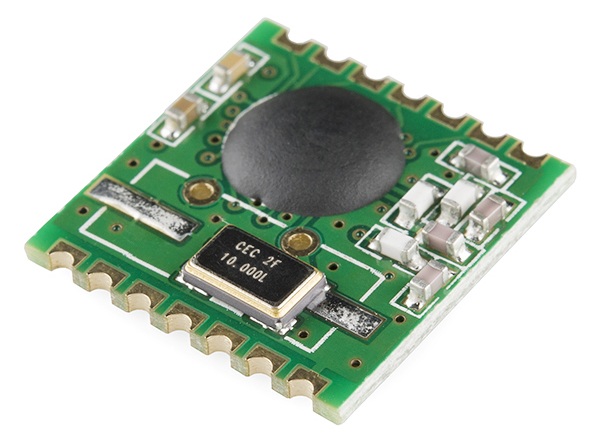Radio Hack
Pictured above is the RFM 12B radio transceiver that sits on one end of a JeeNode. It is actually quite tiny—about the size of a fingernail. It’s extremely energy-efficient (every component that JeeLabs uses is mindful of power consumption) but it has a quirk: It sends data in binary packets, a seemingly confusing series of numbers in the range of 0 to 255 (read this for more info). That isn’t very convenient. We just want to see integers (24, for example) or floating point numbers (1.2, for example) representing our soil moisture and temperature data. Luckily, JeeLabs has some pointers on how to decode binary packets, but check out both the send and receive JeeNode codes on our GitHub page to see how it works in practice.
In other radio-related news, we did some range testing with the JeeNodes at Franklin Square to find out just how far away from each other they can be. The results were encouraging—we were successfully sending data from about 300 feet away with a line of sight, and nearly 200 feet with an obstruction in between (in our case, a building). If testing this at a park in Philadelphia named after Benjamin Franklin in any way connects us to the great inventor and the history of our city, well, that’s too much to even think about.

